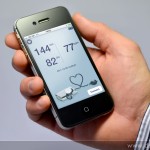 The past few years have provided regular examples of regulators and policymakers seemingly completely out of touch with a tech world that can befuddle those not versed in its lingo. This can result in regulation often being several steps behind the technologies themselves.
The past few years have provided regular examples of regulators and policymakers seemingly completely out of touch with a tech world that can befuddle those not versed in its lingo. This can result in regulation often being several steps behind the technologies themselves.
This can be harmful enough in many industries, but it is especially damaging in healthcare, where bad tech can have life and death consequences. Despite this, the growing number of health apps have thus far not attracted a great deal of attention from regulators.
A recent paper from INSEAD argues that this is a mistake. The authors argue that direct-to-consumer medical apps are often advantageous because of their ability to reduce the chances of getting false negative judgments. The issue of false positives also has evident consequences in terms of health infrastructure, as while early diagnoses help to effectively treat conditions, they also produce more unnecessary appointments.
False positives
The paper argues that as diagnostic test results are already geared towards providing more positive results than the actual disease would warrant, this is only likely to be exacerbated by the surge in direct-to-consumer apps. They cite the example of an app that checks our skin for signs of cancer using the camera built into our smartphones. The app might not place a limit on the number of times each lesion can be checked, therefore increasing the likelihood of something being flagged for attention.
The paper also suggests that these apps are often marketed to a younger and often healthier demographic, which together with the tendency to target relatively rare diseases can make them ripe for generating false-positive diagnoses.
As a result, the authors argue that regulators should consider the potential costs associated with such a surge in false-positive judgments and intervene at an early stage. The paper contains three clear recommendations for regulators:
- Encourage developers to perform robust behavioral research to understand how consumers adapt to their apps.
- Strive to mitigate the costs of false positives by requiring each positive prediction be verified by a virtual appointment with an actual healthcare professional, with the developers bearing some of the cost of this consultation.
- Finally, regulators could give doctors the ability to “prescribe” medical apps to patients, especially if they’re at higher risk. The authors argue that this would help to guide reliable apps into the hands of those who need it most rather than relying on firms to market the apps to consumers directly.
The authors believe that while the onrush of free or cheap medical apps appears like an unalloyed benefit for society, without adequate regulation they can have costs that are perhaps underappreciated by policymakers.